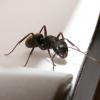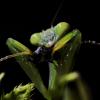

With that said, Carpenters have very specific preferences for the wood they will inhabit: it must be soft wood decayed through white rot fungi only. I've never found (healthy) ants in wood affected by brown rot, if I find any ants at all. They avoid fresh wood that's still rich in terpenes and phenols, among other stuff. However, white rot wood is difficult to come by as colonies grow and habitats must be expanded. So, I've been reading articles on the biology of wood decay and the chemicals fungi use to accomplish it. There's an interesting article from Wood Products Journal on the use of organic acids, such as citric acid, that may be able to artificially turn fresh hardwood into the more favorable softly decayed wood that Carpenters enjoy:
https://www.research..._staining_fungi
The methods in that article, and some others related to it, got me to thinking about using things like peat tea, hydrogen peroxide, and the white rot fungi already present in my older wood to strip any chemical treatments from readily available panels, craft wood, or plain 2x4's, and create an unlimited supply of my own wood for use in growing colonies.
My question is, has anyone tried this, and does anyone have thoughts about how to remove treatments and/or break down carbohydrates so wood is made softer? That is, what has anyone here tried when turning fresh wood from the hardware store into chemical-free, gently degraded wood suitable for carpenter ants?
I'm very curious if anyone else has done these things. At any rate, I'm going to spend my winter doing just this while my colonies are in hibernation.
Edited by CampoKing, November 28 2018 - 11:30 AM.

















